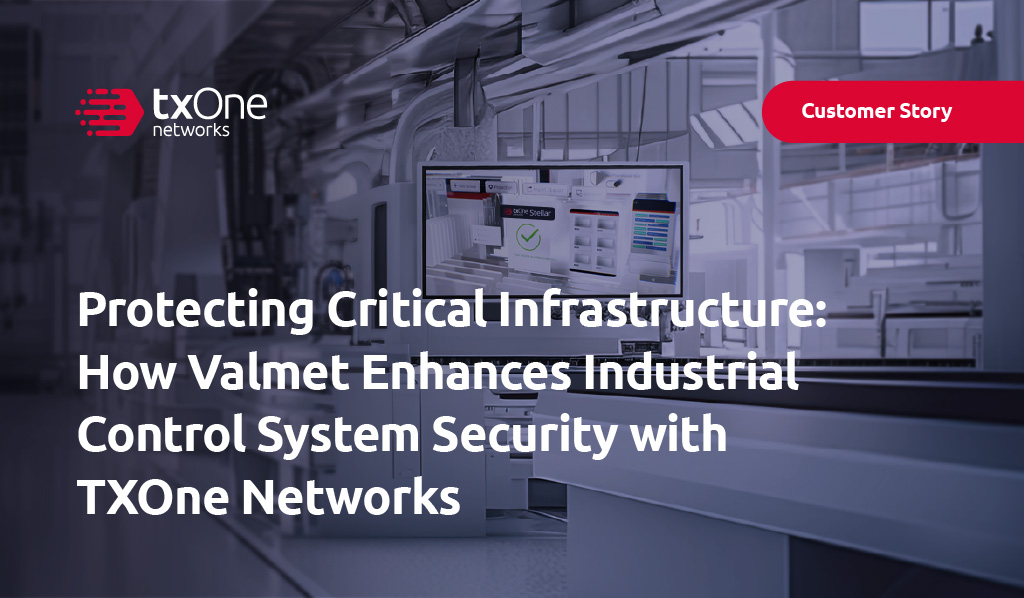Introduction
In the race toward digital transformation, one persistent challenge continues to jeopardize progress—legacy systems in OT environments. These aging assets, often built more than a decade ago, were designed for reliability and uptime—not cyber resilience. In 2025, their presence still looms large, particularly in industries where safety, availability, and continuous operation are non-negotiable.
TXOne Networks’ Annual OT/ICS Cybersecurity Report 2024 highlights this reality and exposes the gap between modern cybersecurity needs and the outdated systems still powering Europe’s critical industries. To further investigate, TXOne Networks commissioned a dedicated survey across six European countries. The results provide sobering insights into the scale of the legacy problem, the risks it presents, and why meaningful change remains so challenging.
Legacy Systems Still Dominate the OT Landscape
Despite years of modernization efforts, legacy technology is far from obsolete. It is, in fact, the backbone of many industrial operations. In TXOne’s 2025 European survey of 550 OT and ICS decision-makers:
- 50% of respondents confirmed that at least half of their OT environments still rely on legacy systems.
- Alarmingly, 20% revealed that more than 75% of their infrastructure is legacy-dependent.
These statistics aren’t just about outdated hardware—they reflect systemic issues of cost, complexity, and compatibility. Deeply embedded in industrial ecosystems, legacy OT assets are often connected to custom applications, older operating systems like Windows 7 or XP, or even vendor-locked hardware with no current support.
Why Legacy Persists
So why do these systems remain so deep-rooted? The top reasons cited by surveyed organizations include:
- Compatibility with legacy equipment (54%) – Replacing one component can trigger a cascade of incompatibilities across the production line.
- High replacement costs (45%) – For many organizations, upgrading an entire OT environment is prohibitively expensive.
- Downtime risk (33%) – Any system upgrade introduces a threat to production continuity.
- Lack of vendor support (20%) – In some cases, newer systems are unavailable or unsupported in highly customized OT environments.
This is especially pronounced in sectors like pharmaceuticals, chemicals, and energy, where precision, compliance, and tightly coupled systems make modernization an uphill battle. In Sweden and Italy, for instance, over half of respondents say the risks of operational disruption are simply too great to justify a refresh.
Cybersecurity Concerns: A Clear and Present Danger
The implications of these legacy environments are more than theoretical—they’re a direct threat to cybersecurity.
- 43% of respondents experienced a cyber incidents on their legacy OT systems within the last year.
- The top threats cited were:
-
- Malware/virus infections (52%)
- Unauthorized access (36%)
- Lack of patching or updates (34%)
- Ransomware attacks (32%)
In sectors like energy, semiconductor manufacturing, and machine building, over half of all companies reported an attack—evidence that legacy OT is becoming a soft target for adversaries.
Barriers to Better Security
Ironically, while awareness of these risks is high, actual implementation of dedicated security controls remains limited. Many organizations are stuck in a loop:
- 44% fear that deploying cybersecurity tools will negatively impact system performance.
- 42% worry about conflicts with OT applications.
- 13% admit they lack the expertise to configure these protections at all.
As a result, only half of the organizations surveyed have taken steps toward protection—and even then, most have only implemented basic measures like continuous monitoring (52%) and endpoint protection (51%).
Misconceptions Around Cost and Effort
Another barrier is the widespread belief that protecting legacy OT systems is just as expensive as upgrading them. In fact:
- 59% of respondents believe upgrading would be as costly—or even cheaper—than deploying dedicated security.
- This misconception fuels a dangerous indecision: companies feel stuck between massive capital investments and unclear returns on cybersecurity.
This paralysis leaves industrial firms exposed—unable to upgrade and unsure how to protect what they already have.
TXOne Networks: Purpose-Built Protection for Legacy OT
At TXOne Networks, we understand the challenges of securing legacy OT, as we built our solutions specifically for this environment.
We advocate an asset-centric security strategy that aligns with the operational realities of OT systems. Instead of forcing rip-and-replace upgrades, our technologies integrate seamlessly with existing infrastructure to provide:
- Stellar: Lightweight endpoint protection designed for legacy assets that can’t afford performance loss or complex agents. It blocks unauthorized changes while keeping systems stable.
- Edge: In-line network defense with virtual patching—shielding unpatchable legacy systems from external exploits and lateral movement.
- Element: A portable security inspection tool for air-gapped and removable devices, perfect for maintaining hygiene in environments that rely on outdated or isolated equipment.
All of these tools are designed for zero operational disruption—meeting the needs of OT engineers and security teams alike.
The Road Ahead: Encouraging Signs
There is hope. Despite low current adoption, 62% of organizations say they plan to invest in OT security solutions specifically for legacy systems. This shift is being driven by:
- Growing threat awareness
- Regulatory pressure
- And more mature solutions that don’t compromise availability
Key decision criteria include:
- Ease of integration (50%)
- Minimal disruption during implementation (49%)
- Proven effectiveness and vendor reputation
TXOne Networks delivers on all three, helping customers keep their operations safe—without overhauling what already works.
Conclusion: Don’t Let Legacy Become Liability
Legacy OT systems are here to stay, at least for the foreseeable future. But they don’t have to be a weakness. With the right approach, industrial firms can secure what they can’t replace—minimizing risk while protecting uptime and productivity.
✅ Download the full TXOne Legacy OT Cybersecurity Report to explore the data, insights, and solutions that can guide your next steps.





